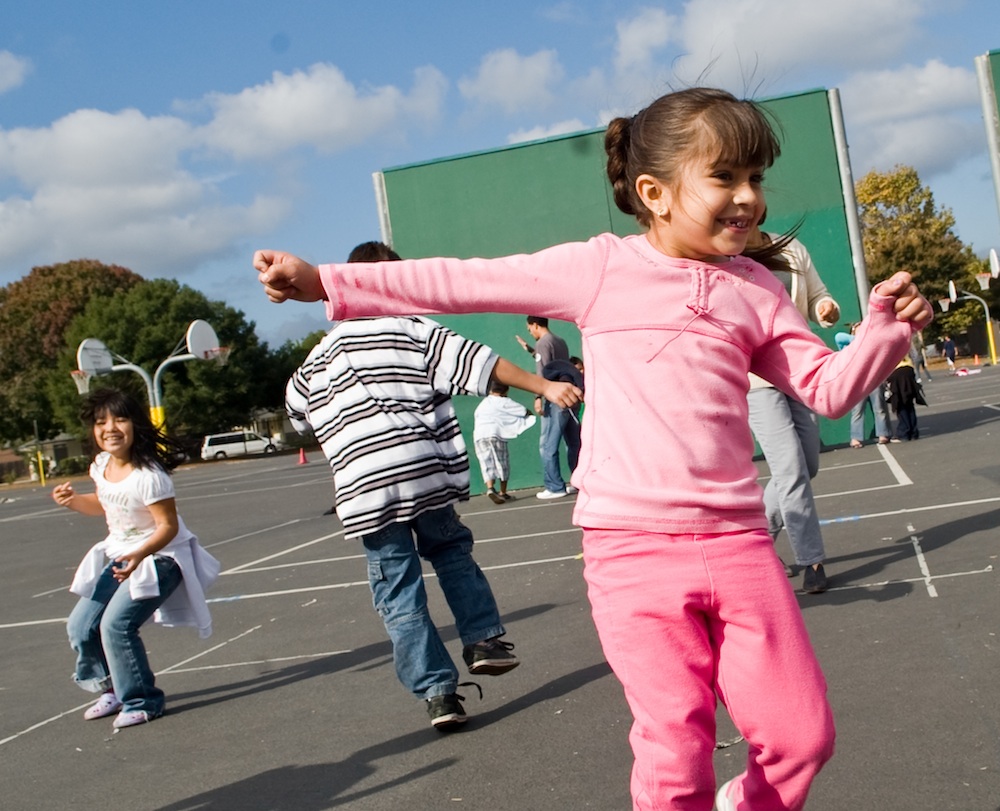
The Benefits of Digging in the Dirt (Op-Ed)

Laura Wright Treadway is a regular contributor to OnEarth magazine, published by the Natural Resources Defense Council. This article was originally published by OnEarth magazine. Treadway contributed this article to Live Science's Expert Voices: Op-Ed & Insights.
In his 2005 book "Last Child in the Woods," which introduced the world to the term "nature-deficit disorder," journalist Richard Louv argued that children need to unplug from computers and smartphones and reconnect with the original way of learning about the world: by wandering around outside.
Louv's book, naturally, was a big hit with environmentalists (the National Audubon Society and Wilderness Education Association were among those who gave him awards). But now that I have a child of my own and read as much about parenting and child development as I do about the environment, I'm increasingly aware that it's not just the eco-minded who are calling for more mud pies and fewer LeapFrog computers for preschoolers. It seems that everywhere I turn, there's another reminder that our children need less time in front of screens and more time figuring things out for themselves.
So this past summer, I enrolled my then year-and-a-half-old daughter in a parent-child class at the Brooklyn Forest School in Prospect Park, just a couple of blocks from our home. We walked to the park once a week and met up with other families to pour some water on dirt to make mud, share a snack, poke a stick in the water and sing songs. The forest school, one of many across the country that takes the place of traditional preschools and kindergarten classrooms, isn't a new concept. The first forest kindergarten opened outside Seattle in 2007, but programs like this one are becoming increasingly popular.
Parents are clearly willing to pay to get their kids outside more, and with good reason. Forty percent of U.S. school districts cut recess or physical education programs after the U.S. Congress passed the No Child Left Behind Act in 2001, partly in response to pressure to improve test scores. But the benefits of getting outside to play are manifold, particularly in natural settings. Studies show that exposure to nature can help reduce ADHD symptoms; in schools with an environmental education component, students score higher on standardized tests in math, reading, writing and listening than their non-nature-exposed counterparts. Other positive effects include improved critical thinking, problem solving and cooperation. And there are health benefits, too: Kids who play outside more often are less likely to develop nearsightedness, obesity, diabetes and vitamin D deficiencies.
On some days last summer, usually when it was blazingly hot and my daughter seemed more interested in testing her foot speed in a dusty open field than mixing water into the dirt under a shady tree canopy, I told myself we could just do this on our own without paying for it. After all, many of our activities mirrored those of my own childhood: walking through the woods, poking sticks in the water (streams in my case, a pond in my daughter's), and making imaginary forts out of hollow trees.
It seems that everywhere I turn, there's another reminder that our children need less time in front of screens and more time figuring things out for themselves.
Sign up for the Live Science daily newsletter now
Get the world’s most fascinating discoveries delivered straight to your inbox.
Learning to build shelter in the woods might be a forgotten kids' game but it's also a survival skill, even today. The quest to avoid spending the night wet and freezing required the ability to work creatively to solve a problem as a team, then as it does now. And although many of my peers grew up building forts in the woods, fewer kids are doing that today. Now children enter kindergarten having watched, on average, some 5,000 hours of television — that's more than a full day's worth each week — according to a 2009 report from the A.C. Nielsen Company. Television, plus iPads and iPhones, and the push to show early academic achievement by memorizing shapes and colors from the age of two, has pulled us away from our roots in creative play and the outdoors.
After our forest school session ended, the feeling that I could simply make the time to do this sort of stuff with my daughter on my own kept nagging at me. But the thing was, as the fall wore on, we didn't find nearly as much time as I thought we would to simply slow down, sit in the grass, and just check things out.
That is until one day this fall. As we walked through the park, I accidentally spilled some water and I thought to employ a lesson from forest school: make mud. I turned over leaves looking for sticks and she grabbed some large pieces of mulch and started mixing. We took turns squishing the mud, spreading it on the bark of a nearby tree, and picking out leaves to stick to our "sculpture." A half hour passed and Barrett was still focused on her work.
Since then, she increasingly stops while we're walking the dog in the park and sits down to get dirty, idle in leaf piles, and generally lead the way a little more often. I don't always have water handy, but we dig down a bit to see if the ground is wet and what else we find. There's a lot of pasting clumps of dirt onto exposed tree roots, and a lot of curious glances from passers by. It's often hard to get her to leave her mud creations behind, and we're both happier for it.
Follow Treadway @lwrighttreadway. This article first appeared as "The Benefits of Digging in the Dirt" in OnEarth magazine. The views expressed are those of the author and do not necessarily reflect the views of the publisher. This version of the article was originally published on Live Science.









